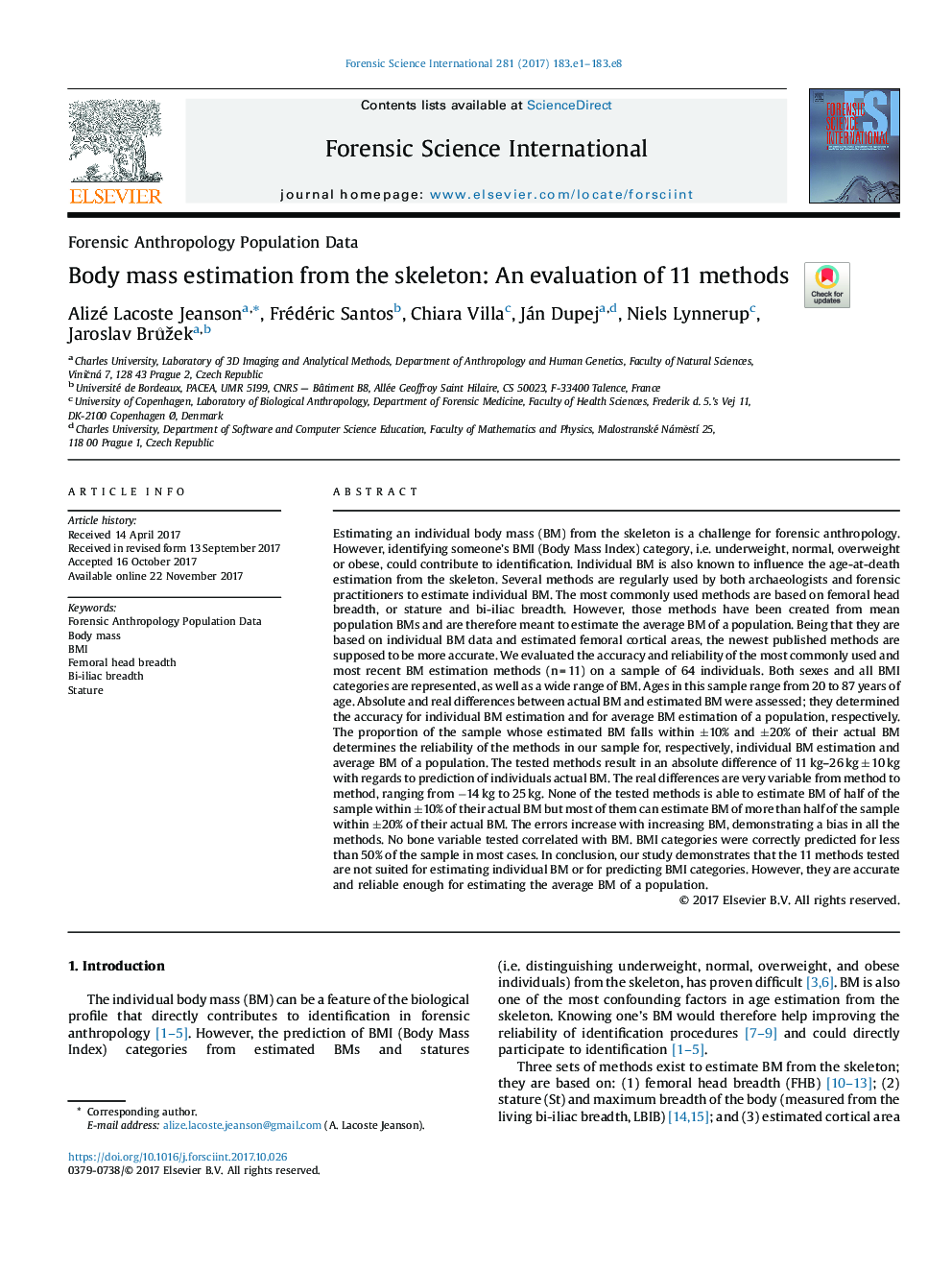| کد مقاله | کد نشریه | سال انتشار | مقاله انگلیسی | نسخه تمام متن |
|---|---|---|---|---|
| 6551453 | 1421969 | 2017 | 8 صفحه PDF | دانلود رایگان |
عنوان انگلیسی مقاله ISI
Body mass estimation from the skeleton: An evaluation of 11 methods
ترجمه فارسی عنوان
برآورد توده بدن از اسکلت: ارزیابی 11 روش
دانلود مقاله + سفارش ترجمه
دانلود مقاله ISI انگلیسی
رایگان برای ایرانیان
کلمات کلیدی
موضوعات مرتبط
مهندسی و علوم پایه
شیمی
شیمی آنالیزی یا شیمی تجزیه
چکیده انگلیسی
Estimating an individual body mass (BM) from the skeleton is a challenge for forensic anthropology. However, identifying someone's BMI (Body Mass Index) category, i.e. underweight, normal, overweight or obese, could contribute to identification. Individual BM is also known to influence the age-at-death estimation from the skeleton. Several methods are regularly used by both archaeologists and forensic practitioners to estimate individual BM. The most commonly used methods are based on femoral head breadth, or stature and bi-iliac breadth. However, those methods have been created from mean population BMs and are therefore meant to estimate the average BM of a population. Being that they are based on individual BM data and estimated femoral cortical areas, the newest published methods are supposed to be more accurate. We evaluated the accuracy and reliability of the most commonly used and most recent BM estimation methods (n = 11) on a sample of 64 individuals. Both sexes and all BMI categories are represented, as well as a wide range of BM. Ages in this sample range from 20 to 87 years of age. Absolute and real differences between actual BM and estimated BM were assessed; they determined the accuracy for individual BM estimation and for average BM estimation of a population, respectively. The proportion of the sample whose estimated BM falls within ±10% and ±20% of their actual BM determines the reliability of the methods in our sample for, respectively, individual BM estimation and average BM of a population. The tested methods result in an absolute difference of 11 kg-26 kg ± 10 kg with regards to prediction of individuals actual BM. The real differences are very variable from method to method, ranging from â14 kg to 25 kg. None of the tested methods is able to estimate BM of half of the sample within ±10% of their actual BM but most of them can estimate BM of more than half of the sample within ±20% of their actual BM. The errors increase with increasing BM, demonstrating a bias in all the methods. No bone variable tested correlated with BM. BMI categories were correctly predicted for less than 50% of the sample in most cases. In conclusion, our study demonstrates that the 11 methods tested are not suited for estimating individual BM or for predicting BMI categories. However, they are accurate and reliable enough for estimating the average BM of a population.
ناشر
Database: Elsevier - ScienceDirect (ساینس دایرکت)
Journal: Forensic Science International - Volume 281, December 2017, Pages 183.e1-183.e8
Journal: Forensic Science International - Volume 281, December 2017, Pages 183.e1-183.e8
نویسندگان
Alizé Lacoste Jeanson, Frédéric Santos, Chiara Villa, Ján Dupej, Niels Lynnerup, Jaroslav Brůžek,
